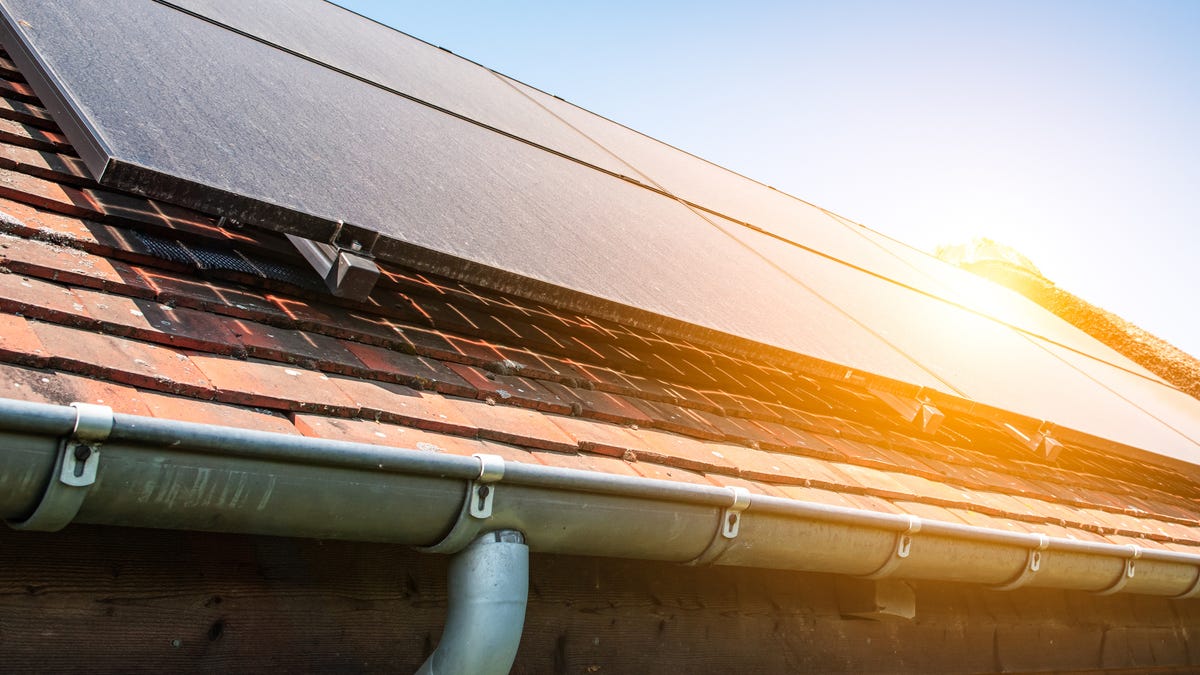6 Ways to Go Solar for Cheap

Installing a solar system on your home can feel complicated and costly. After all, solar panels are meant to be a long-term commitment of a quarter century or longer.
Even though there’s an entire industry dedicated to making this process as painless as possible, there are plenty of pitfalls to avoid. You can spend an infinite amount of money on a system designed to protect you against any number of apocalypses. But going solar doesn’t have to be a huge expense. Some basic approaches and programs can make going solar a very smart investment over the medium to long term.
Here are a few ways to make going solar cheaper.
Can solar panels save you money?
Interested in understanding the impact solar can have on your home? Enter some basic information below, and we’ll instantly provide a free estimate of your energy savings.
Compare installer quotes
As with anything else, the key to getting the best price is knowing the market.
Corey Ramsden, vice president for Go Solar programs at Solar United Neighbors, recommends that consumers get at least three proposals when shopping for a residential solar installation. SUN is a non-profit dedicated to helping people go solar directly and that also advocates for improved solar policies.
It’s not so much about looking for the cheapest price but rather finding a quality installation at the best value, Ramsden said. There’s also usually room for negotiation, and having other quotes in hand may help with that process. He says to go about it the same way you would shopping around for any other sort of contractor.
“Talk to friends and neighbors, talk about their experiences, check online reviews,” Ramsden said. “If you’re getting loan financing, one particular tip is to make sure you ask for a cash price in addition to whatever loan financing you’re seeing. That makes it easier to compare installation costs between providers.”
The state-based chapters of the Solar Energy Industries Association may also maintain lists of trusted installation firms that can be a good starting point, alongside CNET’s library of reviews.
It’s not necessarily better to go with a large, nationwide installer versus smaller, locally-focused companies, Ramsden said. Both can perform well or leave customers dissatisfied.
“Most of the solar industry does wonderful work and are trying hard to meet the needs of their customers, but there are some bad actors out there, unfortunately,” he said.
Whoever you speak to, be sure to get all quotes and details in writing.
Solar companies that price match
Getting a sense of how much a solar installation is going to cost for your unique situation can be tricky. As such, most solar companies can be quite cagey about providing much pricing information before you’ve already invested a significant amount of time with them going over the myriad details of your home and needs.
But there are a handful of installers that are willing to guarantee their ability to compete on price, although sometimes they might refer to it as matching or beating value rather than overall cost. Here’s a list of the companies we’ve spoken to that offer some sort of price match:
- ADT Solaroffers a price match guarantee that helps make it CNET’s top rated solar company.
- Tesla Solaroffers a price match with the backing of a recognizable national brand.
- Momentum Solaroffers a price match in cases “when it’s apples to apples” and a competitor offers a comparable design and components with certified in-house labor.
- Palmetto Solar offers a price match at the discretion of the salesperson.
- Elevation Solar also offers a price match along with its whole-house efficiency upgrade package.
Take advantage of solar incentives
A maze of tax credits and other incentives are available to help bring down the cost of going solar. The recent Inflation Reduction Act set the federal residential energy tax credit at a whopping 30 percent, and plenty of states also offer money back or some other form of savings.
A good installer should be up to date and informed on what’s available in your area. SUN also staffs a help desk that’s free to US consumers. Ramsden said there’s a lot of information online of varying quality.
“I would particularly be wary of trusting incentive information that’s coming through a marketing channel like Facebook ads or things of that nature,” he said. “They can often be a little misleading.”
In particular, watch out for any marketing that talks about solar being completely free.
“It should raise flags for you,” Ramsden said. “Anything that you’re engaging with in the marketplace is going to have a cost, whether it’s a lease or loan or cash.”
North Carolina State University maintains a database of state incentives for renewables and efficiency (DSIRE) that can be a good starting place to double check what’s available in your area.
Low-income solar programs and initiatives
One exception to the rule about avoiding messaging on free solar is if it’s a government program that provides free solar for low-income households. Such programs do exist and the DSIRE site is one potential way to verify a program is legit.
New state and local programs seem to be coming online as funding from the IRA is beginning to filter down to local institutions. Just be sure that any information you consider is coming from a trusted source. You can also read CNET’s guide to avoiding solar scams before signing up for anything that sounds too good to be true.
Solar discount programs
Local nonprofits, co-ops or other groups in your area may organize discount or group buying programs to bring down the cost of solar.
SUN runs buying programs in 11 states, DC and Puerto Rico. And Ramsden says other groups work in other states. Ask local installers and others in the industry if they’re aware of such programs in your area.
Consider community solar installations
About half of states have enabled community solar programs, which allow residents to subscribe to an array located elsewhere in their community that is generating electricity, thereby lowering their own cost of power in the form of bill credits from that array.
“Community solar is by design opening market access to folks that can’t put solar on their roof physically,” said Gilbert Michaud, assistant professor of Environmental Policy at Loyola University Chicago. “They could have an aging roof or be renters, condo owners … It’s about opening access.”
Michaud says only 25% of people actually have the ability to put panels on their roof. If the other 75% have an appetite for renewable energy, community solar could be a way to do it.
Another option are so-called “solarize” programs in which a bunch of neighbors band together to work with one installer to achieve economies of scale, potentially reducing costs by 15-20%.
Affordable solar leases
Leases can be a good option for people who don’t want to take out a loan and don’t have the cash or interest in installing their own system. Instead, you can agree to let a company install and maintain an array that they retain ownership of on top of your roof in exchange for leasing that array from the company or agreeing to purchase the power it generates for a fixed cost. The rules that govern exactly how these agreements can be structured varies by state.
“For folks that really just want to have someone else take care of it and they want cheaper electricity, that is certainly an option,” Ramsden said.
He emphasizes taking a look at all the fine print on a lease or power purchase agreement to be sure you understand precisely which party will be responsible for what during what could be a very long-term partnership with a solar company.
Michaud added that in the case of a lease, homeowners don’t get the federal tax credit or most other incentives.
More on solar panels
Source: CNET















